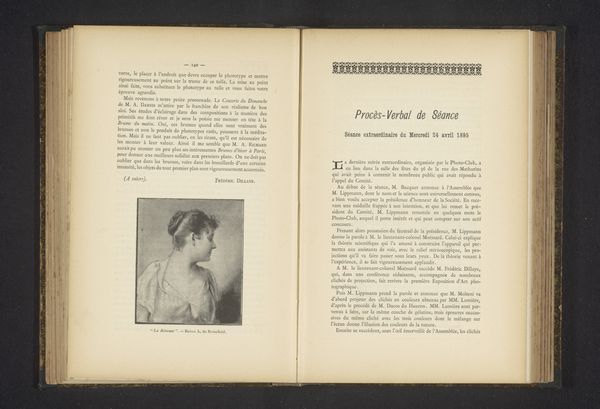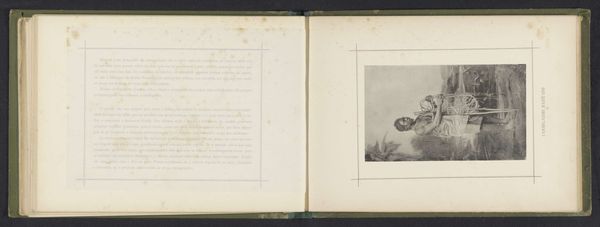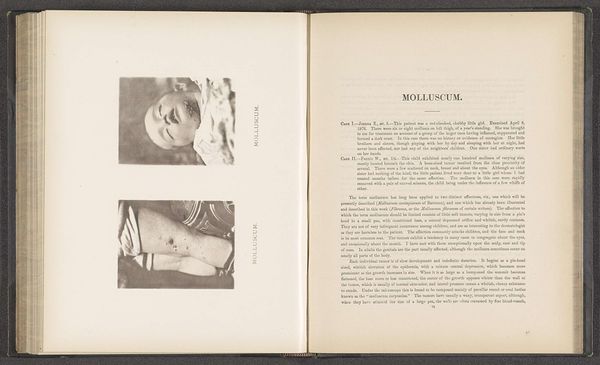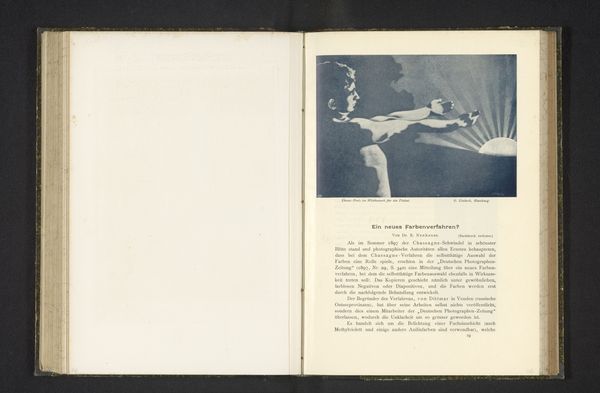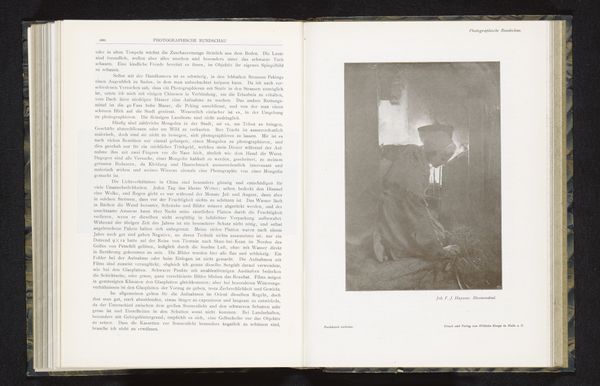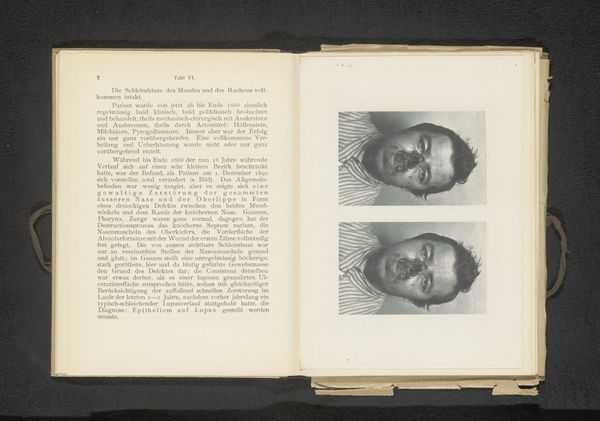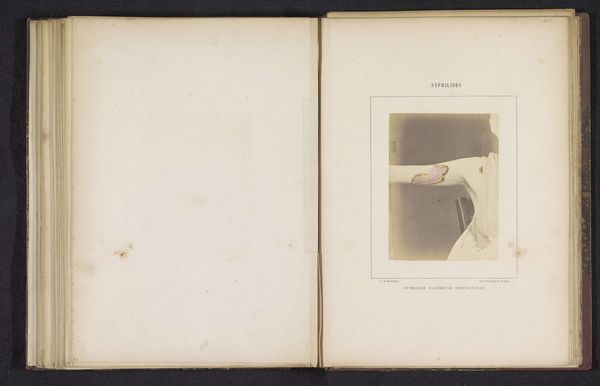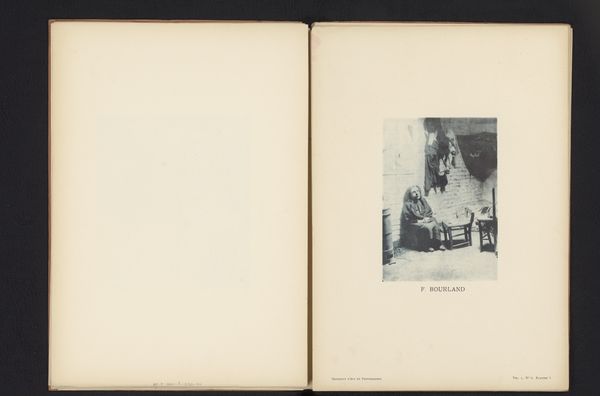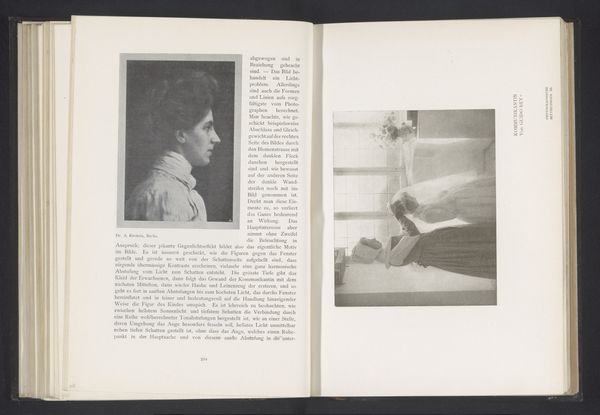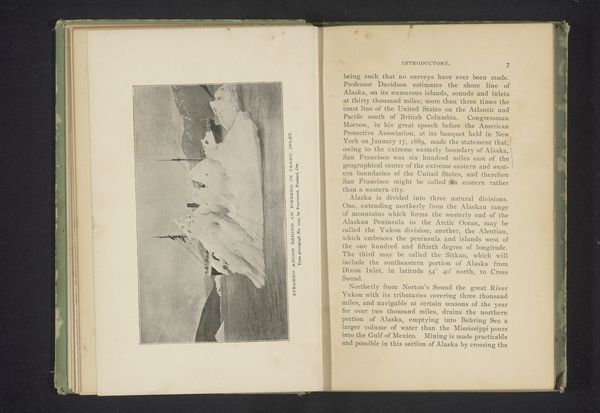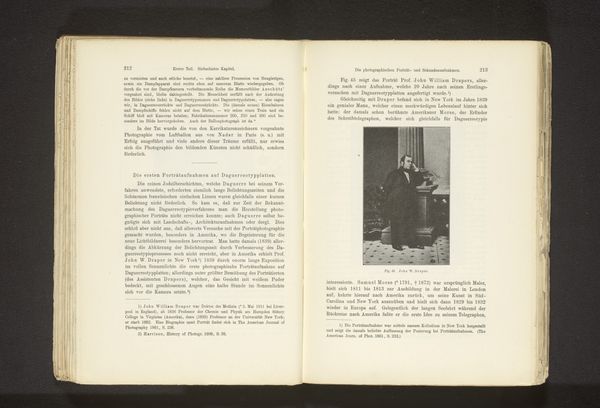
Pagina 28 en 29 van fotoboek van de Algemeene Vereeniging van Rubberplanters ter Oostkust van Sumatra (A.V.R.O.S.) c. 1924 - 1925
0:00
0:00
jwmeyster
Rijksmuseum
photography
#
portrait
#
photography
#
photojournalism
Dimensions: height 240 mm, width 310 mm
Copyright: Rijks Museum: Open Domain
Editor: Here we have a spread from a photo book, circa 1924-1925, titled "Page 28 and 29 from photo book of the General Association of Rubber Planters on the East Coast of Sumatra," taken by J.W. Meyster. There's a striking portrait on the left page. The person’s posture almost looks like he is bowing, and I'm curious about the intent of the photographer here. How do you interpret this work? Curator: Considering this photo originates from a book documenting a rubber plantation association, it is pertinent to scrutinize the means of production that influenced its creation. We can infer this image exists to support the interests of the A.V.R.O.S. The individual photographed is very likely a high ranking member and photographed for public recognition in the book, which functioned as advertisement and a documentation of success for members of the organization. Do you see how it may influence your interpretation of this image? Editor: Absolutely. So, the photograph itself becomes a tool within the larger economic system of rubber production at the time. The 'bowing' pose could be read differently - it might not be deference, but rather a symbolic representation of overseeing, perhaps even owning, the labor happening within the rubber plantations. It also strikes me that portraiture became a medium for corporations or governing entities at the time to project their influence and control. Curator: Precisely. The materials used, the printing process, the very existence of this photo book as a commodity – they all contribute to our understanding of its social context. Consider the labor involved in both the plantation and in the creation of this artifact. This allows us to delve into both its materiality and broader consumption Editor: It makes me wonder about the labor conditions, how the book might have been circulated among elites, while suppressing details of working and living conditions. Curator: A fruitful consideration of context, the labor, the intent, and of the actual photograph in and of itself. It really ties our interpretation together, I'd say.
Comments
No comments
Be the first to comment and join the conversation on the ultimate creative platform.

